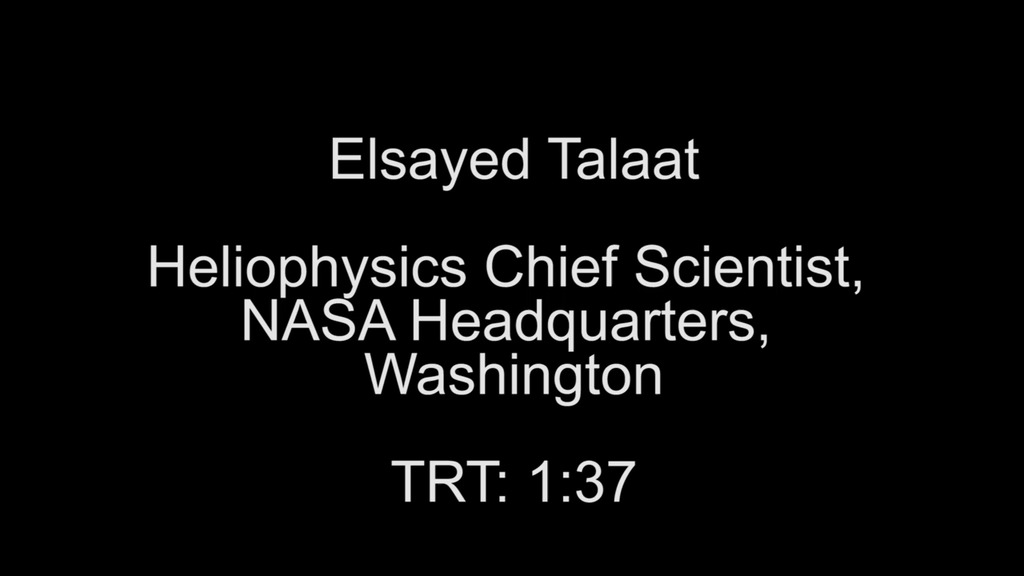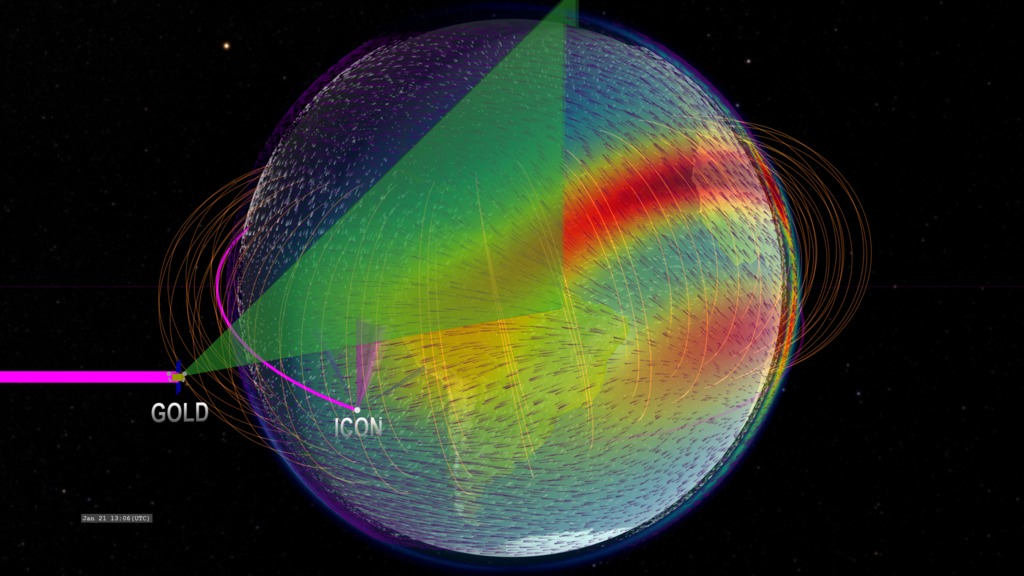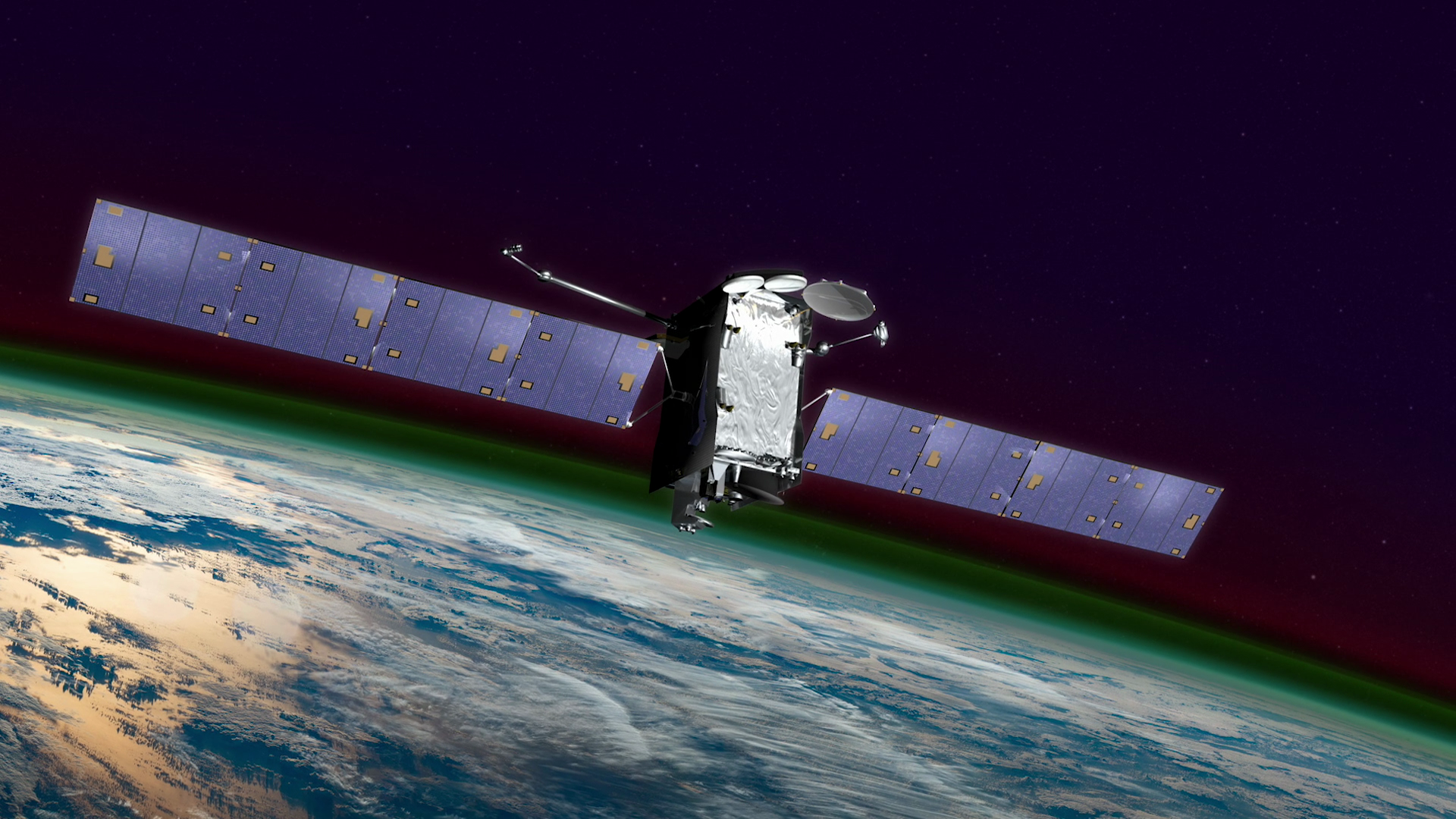GOLD in Geostationary Orbit
The GOLD instrument orbits Earth in a geostationary orbit over the western hemisphere.
The GOLD instrument will be riding as a passenger instrument onboard a commercial communications satellite positioned in geostationary orbit.
GOLD will scan the disk and limb of Earth with an ultraviolet imaging spectrograph to measure the response of Earth's ionosphere to the various forcings in the Sun-Earth system.
Credits
Please give credit for this item to:
NASA's Scientific Visualization Studio
-
Visualizer
- Tom Bridgman (Global Science and Technology, Inc.)
-
Scientist
- Sarah L. Jones (NASA/GSFC)
-
Producers
- Genna Duberstein (USRA)
- Joy Ng (USRA)
-
Writer
- Kathalina Tran (SGT)
-
Technical support
- Laurence Schuler (ADNET Systems, Inc.)
- Ian Jones (ADNET Systems, Inc.)
Release date
This page was originally published on Thursday, January 4, 2018.
This page was last updated on Wednesday, November 15, 2023 at 12:11 AM EST.





![Complete transcript available.Music credits: 'Faint Glimmer' by Andrew John Skeet [PRS], Andrew Michael Britton [PRS], David Stephen Goldsmith [PRS], 'Ocean Spirals' by Andrew John Skeet [PRS], Andrew Michael Britton [PRS], David Stephen Goldsmith [PRS] from Killer Tracks.Watch this video on the NASA Goddard YouTube channel.](/vis/a010000/a012800/a012817/GOLDOverview_YouTube.00001_print.jpg)